



1 - In 1905 "One Eyed" Frank McGee was hockey's purest goal scorers. Prior to joining the NHA, McGee played with the Ottawa Silver Seven in the Federal Hockey League. He once scored 14 goals in a game, another time he notched 8 consecutive markers. In the 05 final against Rat Portage (now Kenora) he scored the cup winning goal with a broken wrist. All series he had terrorized the opponant with multi goal games. In the clinching game, McGee wore a specially fitted metal protector on the wrist. During the game, players for Rat Portage took liberties with the metal shield, wacking every chance they had. After the game, McGee revealed that he'd purposely placed the shield on the good wrist to suss out his opponants. Very clever!
2 - Harold Ballard was never a big fan of rules. He worshipped Leaf supporters and feared at times insulting their intelligence. When league president Clarence Campbell ordered him to put names of his players on the backs of jerseys, he balked, saying "Leaf fans know who the players are!" He eventually half conceded, putting them on the blue road jerseys, but remainded defiant they would never appear on the home whites. Campbell had enough of Ballards antics and threatened a fine if he didn't get in line. Next game, the names were indeed on the backs of the home white jerseys. Campbell fined him regardless. Ballard had the lettering done in white so they could not be seen. What a senile deviant!
3 - Roger Neilson, former coach of the Leafs and Canucks, among others, was a very inventive trailblazer for the game. Some of his left field antics are quite legendary in hockey circles. While coaching the Peterborough Petes in the OHL, he'd pull his goalie but tell him to lay his stick down in the crease. There was no rule saying he couldn't. Next season - there was. His most infamous stunt was the illegal substitution. With the Petes attempting to qualify for the playoffs one particular game, Neilson found himself in a hole towards the end of the game. Up by a goal but two men short due to penalties, he called a time out and discussed a wicked plan with certain players. When 5 on 3 play resumed, Neilson threw 2 forwards over the boards. The entire rink was baffled, including the opposing players and referee, who was unable to blow the whistle until a Pete touched the puck. Trouble was, they were avoiding touching it, as per Neilson's orders. Once they came in contact, the whistle blew, and the two players headed to the box. Asked for an explanantion by the ref, Neilson countered there was nothing in the rule book that said he couldn't do it. His ploy was to kill off the final minute of play this way. As only two players can serve penalties at once, and with no overtime in regular season play back then, Neilson was secure in the fact the penalty minutes didn't have to be served. The ref was furious and stated neilson was making a mockery of the game. The coach didn't care, he just wanted to make the playoffs. When play started once more he did it again with the same result. In fact he kept doing it until his bench was half empty and the clock out of time. League governors held an emergency meeting and countered the rule with a heavy fine and suspension. What a sneak!
4 - In 1970, there were two phenominal junior hockey stars that had the hockey world anticipating their arrival in the NHL. One was Marcel Dionne, of the St. Catherines Blackhawks, the other was Guy Lafleur of the Quebec Ramparts. The Montreal Canadiens were desperate and determined to land Lafleur and began planning for it two years prior to the draft. It was a fail proof plan in the sense that if they lost out on Lafleur, they would inevitably settle for Dionne. Call it a win-win deal. What GM Sam Pollock endeavoured to do was trade players who did not fit into the Habs plans to four of the six Western Conference teams. Over the two year period, several deals were concluded to the efeect that the Oakland Seals and the Los Angeles Kings became the weak sisters of the West. Pollock had made one deal with the Seals at the previous draft giving Oakland a #1 pick in 1970, plus forward Ernie Hickey, in exchange for their #1 pick in 1971 - a pick they could use to select Lafleur. All the Seals had to do to comply was finish last. With the trade deadline fast approaching, the Seals began to win, putting a fork in Pollocks plan. The GM took a gander at the schedule and noticed that the last place overall Kings were to play the Seals three more times in the final weeks of the season. Needing the Kings to overtake the Seals to secure Lafleur, Pollock dispatched sturdy two way center and 25 goal scorer Ralph Backstrom to L.A. for a measely future considerations. Pollock did not want to remove a single asset from what he hoped would be a surging Kings squad in the final weeks. It did the trick, in fact the Kings moved all the way up to 9th overall, still missing the playoffs. They hardly cared about the draft picks - they had traded their to Boston. The Kings were hoping to avoid humiliation of having dealt the Bruins a pick that would turn into Lafleur or Dionne. The Bruins Harry Sinden and Milt Schmidt were livid with the Habs and Kings to be sure, and they vowed to never deal with either of them again. The Bruins picked 6th that year in L.A.'s spot and chose Ron Jones. The spin to Boston media was that he was better than either of the players they missed out on. Ron Jones career ended at 54 games. How wickedly ingenious!
5 - Also in 1970, at the Cornwall Royals traning camp, an undrafted walk on showed up to make the team. Head scout Gord Wood was surprised as he'd never heard of the defenseman from any scouting sources. After checking references, the player was given a tryout. Two days into camp, the lanky redhead with the long flowing locks emerged as not only the cream of the rookie crop, but also as the teams best blueliner. Everyone was stumped to be sure. After 10 days in camp, coach Orval Tessier told the big bruiser, all he needed to do to make the cut and the team was get a haircut - the team had a longstanding short hair policy. The player refused. With the team insisting the player held out for a day or two and then bolted when he received a tryout offer from the Kitchener Rangers, where a trim wouldn't be needed. The Royals did fine without him, winning their first Memorial Cup in '72. The player however would not be forgotten. He was none other than Larry Robinson! Oops!




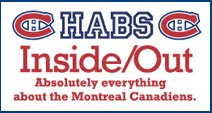





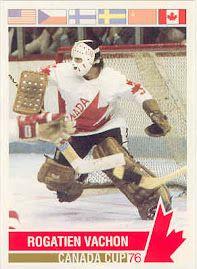
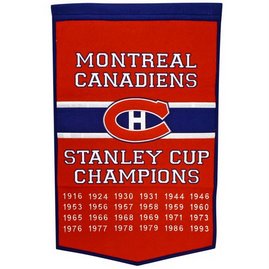







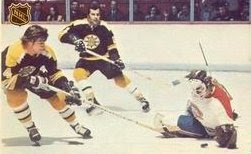



















































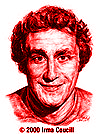



































































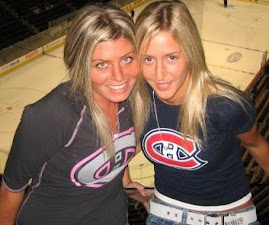


















1 comment:
Great post. I didn't know any of those.
Post a Comment